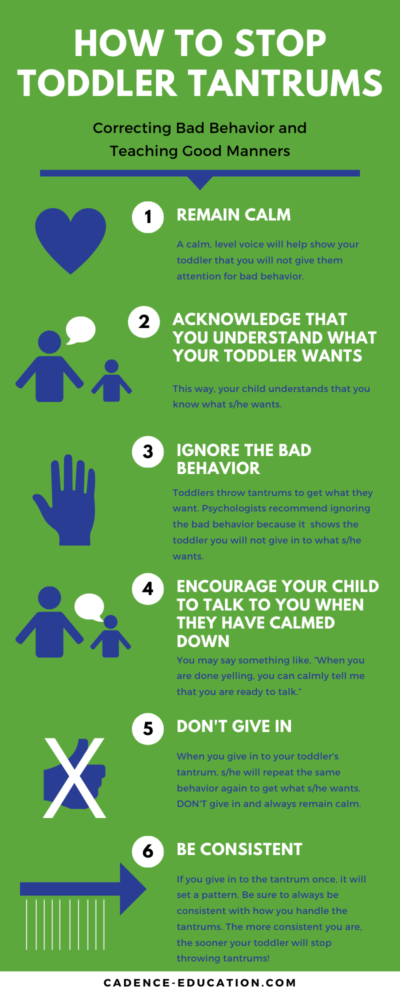Are you struggling to handle your 2-year-old’s severe temper tantrums? You’re not alone.
These intense outbursts can feel overwhelming, exhausting, and sometimes even embarrassing. But what if you could learn simple, effective ways to calm your child quickly and reduce these tantrums over time? Imagine having more peaceful moments and less stress every day how to stop severe temper tantrums in 2 year-olds: proven tips.
Keep reading, because you’ll discover practical steps that can help you regain control and bring calm back to your home.

Credit: cheerschildcare.com
Causes Of Severe Tantrums
Severe temper tantrums in 2-year-olds often confuse parents. Understanding the causes helps manage and reduce these outbursts. Tantrums usually arise from a mix of feelings and needs the child cannot express well.
Emotional Overwhelm
Young toddlers feel emotions strongly but cannot control them. Big feelings like anger, fear, or sadness can become too much. Their small minds struggle to calm down. This overload often triggers a loud tantrum.
Communication Frustrations
Two-year-olds want to share their thoughts but lack words. They get upset when adults do not understand them. This gap creates frustration and leads to crying or yelling. Tantrums act as their way to say, “I need help.”
Physical Needs
Toddlers’ bodies affect their moods. Hunger, tiredness, or discomfort can spark tantrums. When needs go unmet, children become irritable quickly. Simple things like hunger can turn into big meltdowns.
Environmental Triggers
Some places or situations cause stress for toddlers. Loud noises, bright lights, or crowded rooms overwhelm them. Changes in routine or unfamiliar people can upset their sense of safety. These triggers often start tantrums without warning.
Recognizing Tantrum Patterns
Recognizing tantrum patterns helps parents manage their child’s emotions better. It allows you to act before the tantrum grows. Understanding signs and triggers makes handling outbursts easier. Observing your child closely is the first step.
Noticing when and why tantrums happen helps reduce their frequency. You learn to calm your child quickly. This knowledge creates a safer and happier environment for both.
Common Warning Signs
Many toddlers show signs before a tantrum starts. They may stomp their feet or clench their fists. Some children might cry or yell softly first. Watch for facial changes like frowning or grimacing. These signs signal rising frustration or anger. Catching these early can prevent a full tantrum.
Timing And Frequency
Tantrums often happen at certain times of the day. They may occur when your child is tired or hungry. Notice how often tantrums happen daily or weekly. Frequent tantrums may mean your child needs more rest or food. Keeping a simple diary can help track these patterns. This record helps you prepare and avoid triggers.
Situational Triggers
Tantrums can start in specific situations. Common triggers include being told “no” or having a toy taken away. Changes in routine can upset toddlers too. Loud noises and crowded places might cause distress. Identify places and events that spark tantrums. This knowledge helps you plan and reduce stress for your child.
Effective Prevention Strategies
Stopping severe temper tantrums in 2-year-olds begins with prevention. Preventing tantrums helps your child feel safe and understood. It also reduces frustration for both of you. Using simple, clear strategies can make a big difference every day.
Consistent Routines
Children feel secure when daily routines stay the same. Regular meal times, play, and naps help your child know what to expect. This predictability lowers stress and reduces tantrums. Keep routines simple and follow them as much as possible.
Clear Boundaries
Set clear rules that your child can understand. Use short sentences and repeat rules often. Firm boundaries teach your child what is okay and what is not. Consistency in enforcing rules helps avoid confusion and tantrums.
Offering Choices
Give your child small choices to feel in control. Let them choose between two snacks or two toys. This makes your child feel respected and less likely to act out. Keep choices simple and limited to avoid overwhelm.
Managing Expectations
Match tasks and activities to your child’s age and abilities. Avoid expecting too much too soon. Praise your child for trying, not just succeeding. Clear, realistic expectations help your child feel confident and calm.

Credit: www.cadence-education.com
Calming Techniques During Tantrums
Severe temper tantrums in 2-year-olds can be tough for parents. Using calming techniques during these moments helps both the child and parent feel better. These methods reduce stress and guide toddlers back to calmness.
Staying Calm
Stay calm to help your child calm down. Take deep breaths and speak softly. Your calm voice can soothe your toddler. Avoid yelling or showing frustration. Children often mimic your emotions.
Distraction Methods
Distract your child with toys or games. Offer a favorite book or a new object. Change the environment to shift their focus. Distraction helps break the tantrum cycle quickly. It gives the child something positive to think about.
Comforting Approaches
Offer gentle hugs or hold your child’s hand. Use soft words to reassure them. Comfort shows your child they are safe. Physical touch often lowers their tension. Comforting helps build trust and security.
Safe Space Creation
Create a quiet, safe space for tantrums. A cozy corner with pillows or soft toys works well. This space lets your child calm down alone. It teaches self-soothing skills. Keep the area free from sharp or dangerous objects.
Building Emotional Skills
Building emotional skills helps toddlers handle big feelings better. It teaches them to express emotions clearly. This reduces tantrums and frustration. Young children learn step by step how to manage emotions. Parents play a key role in this learning process.
Teaching Words For Feelings
Help your child name their feelings. Use simple words like “happy,” “sad,” or “angry.” Say these words out loud when your child shows emotion. This practice helps them connect words to feelings. Over time, your child will say how they feel instead of crying.
Modeling Emotional Control
Children watch how adults handle emotions. Show calmness when you feel upset. Use phrases like “I am calm” or “Let’s take a deep breath.” This teaches your child to copy your behavior. Calm reactions help stop tantrums from growing.
Encouraging Problem-solving
Guide your child to find simple solutions. Ask questions like “What can we do now?” or “How can we fix this?” This helps them think before reacting. Problem-solving skills reduce frustration and tantrum frequency. Praise efforts to solve problems to encourage more attempts.

Credit: piccalio.com
When To Seek Professional Help
Severe temper tantrums in 2-year-olds can be tough to handle. Sometimes, these outbursts might signal deeper problems. Knowing when to seek professional help is important for your child’s well-being and your peace of mind. Early support can make a big difference.
Signs Of Underlying Issues
Look for signs beyond normal tantrums. Tantrums that last very long or happen many times a day may need attention. If your child shows extreme anger, fear, or sadness, watch closely. Difficulty sleeping, eating, or talking can also be warning signs. These behaviors might mean your child needs extra help.
Consulting Pediatricians
Pediatricians can check your child’s health and development. They listen to your concerns and observe your child’s behavior. Doctors may suggest tests or refer you to specialists. Early checkups help find any medical or emotional issues. Keep a diary of tantrums to share during visits. This helps the doctor understand the problem better.
Therapy Options
Therapists work with children and parents to manage tantrums. Play therapy helps children express feelings in safe ways. Behavior therapy teaches new ways to handle anger and frustration. Some children benefit from speech or occupational therapy. Therapy plans fit each child’s unique needs. Professional support guides parents too, offering tools to improve family life.
Frequently Asked Questions
What Triggers Severe Temper Tantrums In 2-year-olds?
Temper tantrums often stem from frustration, tiredness, hunger, or seeking attention. Toddlers express emotions they can’t fully control or communicate yet.
How Can I Calm My 2-year-old During Tantrums?
Stay calm, speak softly, and offer comfort. Distract with toys or activities. Avoid giving in to demands to prevent reinforcement.
When Should I Be Concerned About Temper Tantrums?
If tantrums are frequent, intense, or last over 15 minutes, consult a pediatrician. Severe tantrums may signal emotional or developmental issues.
How Does Routine Help Reduce Tantrums In Toddlers?
Consistent routines provide security and predictability. This reduces anxiety and frustration, lowering the chances of temper outbursts in toddlers.
Conclusion
Severe temper tantrums in 2-year-olds can be tough to handle. Stay calm and patient during outbursts. Set clear and consistent rules for your child. Offer comfort and distraction when they get upset. Praise good behavior to encourage positive actions. Remember, this phase will not last forever.
Your efforts will help your child learn better ways to express feelings. Keep trying different strategies until you find what works best. Small changes can make a big difference every day.
About
Maya Deleon is a distinguished figure in the world of Diy design, with a decade of expertise creating innovative and sustainable Diy solutions. His professional focus lies in merging traditional craftsmanship with modern manufacturing techniques, fostering designs that are both practical and environmentally conscious. As the author of diy, Maya Deleon delves into the art and science of parentlytics, inspiring artisans and industry professionals alike.
Education RMIT University
(Melbourne, Australia) Associate Degree in Design (Maya Deleon) Focus on sustainable design, industry-driven projects, and practical craftsmanship. Gained hands-on experience with traditional and digital manufacturing tools, such as CAD and CNC software.
Nottingham Trent University
(United Kingdom) Bachelor’s in parentlytics.com and Product Design (Honors) Specialized in product design with a focus on blending creativity with production techniques. Participated in industry projects, working with companies like John Lewis and Vitsoe to gain real-world insights.
Publications and Impact
In diy, Maya Deleon his insights on indoor design processes, materials, and strategies for efficient production. His writing bridges the gap between artisan knowledge and modern industry needs, making it a must-read for both budding designers and seasoned professionals.
